《人工智能程序设计 第2版》
| 作者 | 米汉著 编者 |
|---|---|
| 出版 | 人工智能资料中心 |
| 参考页数 | 533 |
| 出版时间 | 没有确切时间的资料 目录预览 |
| ISBN号 | 无 — 求助条款 |
| PDF编号 | 817393148(仅供预览,未存储实际文件) |
| 求助格式 | 扫描PDF(若分多册发行,每次仅能受理1册) |
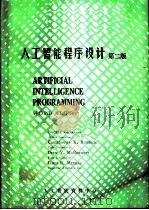
6 Mapping Functions 141
14 More lambda-list keywords 321
13 Keywords 291
12 Lisp style 271
11 Local versus free variables 251
10 Equality 231
9 Inside Lisp 181
8 Atoms 171
7 LAMBDA Expressions 151
Contents1
5 Lists 121
4 Tree Structures 101
3 Primitive Operations on S-expressions 81
2 Program Structures 21
1 Data Structures 11
. LISP REVIEW1
PART Ⅰ:LISP PROGRAMMING1
Pretace 111
6 BIND:A Macro For Special Variables 472
5 Generating new symbols 452
4 Macros 392
3 Terminating read-macros 392
2 The Backquote Read-Macro 342
1 Read-Macros 332
.MACROS AND READ-MACROS 332
17 Conclusion 823
16 BIND 753
15 UNWlND-PROTECT 743
14 CATCH and THROW 743
13 Defining the FOR-macro 693
12 Iteration and lists:the mapping functions 643
11 DO 633
10 ITERATE 603
8 Interrupting the normal flow 583
9 Redi recting the flow of control:GO 593
2 The Conservative Approach to Type Definition 503
.DATA STRUCTURES AND CONTROL STRUCTURES3
IN LISP 483
1 The Need for Data Types 483
7 Local functions:FLET and LABELS 563
3 The Liberal Approach 513
4 The Radical Approach 533
5 Control Structures 553
6 Basic control structure 563
.INPUT/OUTPUT IN LISP 834
1 Streams 844
2 READ-CHAR,READ-LINE,and READ 854
3 PRIN1,PRINC,and TERPRI 884
4 PRINT,PPRINT,and FORMAT 884
5 The MSG Macro 904
6 Separating I/O from Your Functions 934
6 Macros in Compiled Code 1075
7 Variables in Compiled Code 1075
5 Compiler Declarations 1055
8 Lexical Scoping Versus EVAL and SET 1085
9 Ignored Variables 1105
1 What Is Compilation? 975
4 What the Lisp Compiler Does 1015
3 Example:Regular Expressions 1005
2 Implications for Al Programs 995
PROGRAM S PROGRAM 975
. OMPILING YOUR PROGRAM AND YOUR5
.DATA-DRIVEN PROGRAMMING AND OTHER6
PROGRAMMING TECHNIQUES 1116
1 Data-driven Programming 1116
2 Association Lists,Property Lists,and Hash Tables 1126
3 Reimplementing MSG 1166
4 Data-Driven Programming as an6
Organizational Device 1196
5 Set Operations on Lists 1216
6 Headed Lists and Queues 1236
4 Coroutines 1367
5 Continuations and ControI Flow:7
3 Continuations and Multiple Values 1327
CALL-WITH-CURRENT-CONTINUATION 1427
6 Problems with Continuation Passing 1477
1 Passing Procedures In and Out 1277
AND COROUTINES 1277
.HIGHER-ORDER FUNCTIONS,CONTINUATIONS,7
2 Continuations and Tail-Recursion 1297
2 Database Discrimination Nets—Lists of Atoms 1538
4 Implementing Discrimination Trees with8
3 Database Discrimination Nets—General8
S-expressions 1578
1 The General Discrimination Net 1498
.SIMPLE DISCRIMINATION NETS 1498
PART Ⅱ: Al PROGRAMMING TECHNIQUES8
Continuations 1619
.AGENDA CONTROL STRUCTURES 1669
1 Introduction 1 669
2 Best-First Tree Search 1669
3 Coroutines and Agendas 1719
4 Design Alternatives for Agendas 1769
5 Generated Lists 1779
11 Programming with Logic 21510
12 Extending the Retriever 21810
10 Forward Chaining 21310
9 A Deductive Retriever 20210
8 A Unification Algorithm 19510
13 Deductive Retrieval versus Theorem Proving 22310
14 Pattern Matching 22410
15 The Pros and Cons of Deductive Information10
2 Database-defined Predicates 18310
7 Deductive Retrieval 19010
6 Issues 18910
5 Coming to Terms 18810
4 Existential Quantification 18710
3 Connectives,Variables,and lnference Rules 18310
1 Introduction 18210
.DEDUCTIVE INFORMATION RETRIEVAL 18210
Retrieval 22611
.DISCRIMINATION NETS WITH VARIABLES 23011
1 Plan Retrieval 23111
2 Fetching Facts 23511
3 Variations on the Discrimination Net Theme 24011
6 An Example 26612
7 Improvements to XPS 27112
5 The Implementation of XPS 25412
8 XPS and OPS5 27212
9 Deductive Retrieval and Production Systems 27512
2 ReDresentation of Working Memory Elements12
3 Establishing the Conflict Set 25112
in XPS 25012
1 Representation of Rules in XPS 24912
.PRODUCTION SYSTEMS 24812
4 Conflict Resolution in XPS 25112
4 Pattern Matching in XRL 28813
7 Extending XRL 29813
6 Retrieving Forms 29613
5 Indexing Forms 29413
3 IF-ADDED Methods 28713
2 An Introduction to XRL 27713
1 Expanding Property List Facilities 27613
.SLOT AND FILLER DATA BASES 27613
8 Using Problem-Solving Techniques 33214
7 Defining the ATN with Continuations 32814
6 Backtracking with a Transition-Saving Approach 32714
4 An ATN without Backtracking 31214
5 Backtracking In ATNs—A State-Saving Approach 32014
Backup 30514
2 A Basic Transition Network Grammar without14
1 Introduction 30414
.CHRONOLOGICAL BACKTRACKING 30414
3 Representing an ATN Network in Lisp 30814
7 Retracting Clauses and Delabeling Nodes 34515
14 RMS to Lisp Communications 38515
13 Dealing with Interruptions 37915
12 Subsuming Clauses 37815
11 Finding Nogoods 37215
10 Dependency-directed Backtracking 36715
9 The Eight Queens Problem 35515
8 The lmplementation of an RMS 34715
4 Labeling Data-Dependency Networks 33915
6 Incompleteness of the RMS Algorithm 34315
5 Propagating Labels from New Clauses 34115
3 Data-Dependency Network Graphs 33915
2 Data-Dependency Clauses 33815
1 The Need for Reason Maintenance 33715
SYSTEMS 33715
.DATA DEPENDENCIES AND REASON MAINTENANCE15
《人工智能程序设计 第2版》由于是年代较久的资料都绝版了,几乎不可能购买到实物。如果大家为了学习确实需要,可向博主求助其电子版PDF文件(由米汉著 人工智能资料中心 出版的版本) 。对合法合规的求助,我会当即受理并将下载地址发送给你。
高度相关资料
-
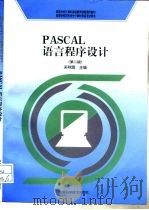
- PASCAL语言程序设计 第2版
- 1998 北京:中国科学技术出版社
-
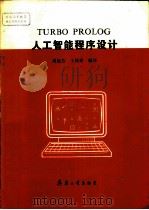
- TURBO PROLOG人工智能程序设计
- 1992 北京:兵器工业出版社
-

- 人工智能教程
- 1993 上海:上海交通大学出版社
-

- 应用于人工智能的PROLOG程序设计
- 1991 北京:科学出版社
-
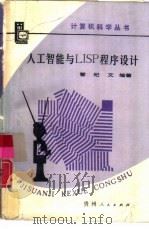
- 人工智能与LISP程序设计
- 1987 贵阳:贵州人民出版社
-

- 标准Pascal程序设计 第2版
- 1990 北京:北京科学技术出版社
-

- 工程设计智能论方法学
- 1987 北京:中国建筑工业出版社
-

- 智能设计
- 1998 北京:高等教育出版社
-
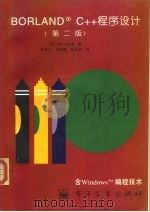
- Borland C++程序设计 第2版
- 1995 北京:电子工业出版社
-
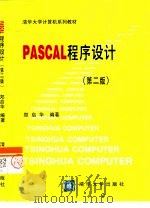
- PASCAL程序设计 第2版
- 1996 北京:清华大学出版社
-

- 人工智能语言-OPS83程序设计与系统
- 1989 北京:北京邮电学院出版社
-

- 人工智能程序设计
- 1989 北京:科学出版社
-

- 程序设计方法学 第2版
- 1985 北京:北京科学技术出版社
-
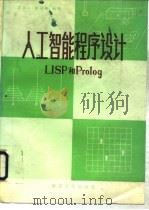
- 人工智能程序设计LISP和PROLOG
- 1986 南京:南京大学出版社
-

- PASCAL程序设计方法 第2版
- 1987 成都:四川大学出版社
提示:百度云已更名为百度网盘(百度盘),天翼云盘、微盘下载地址……暂未提供。➥ PDF文字可复制化或转WORD